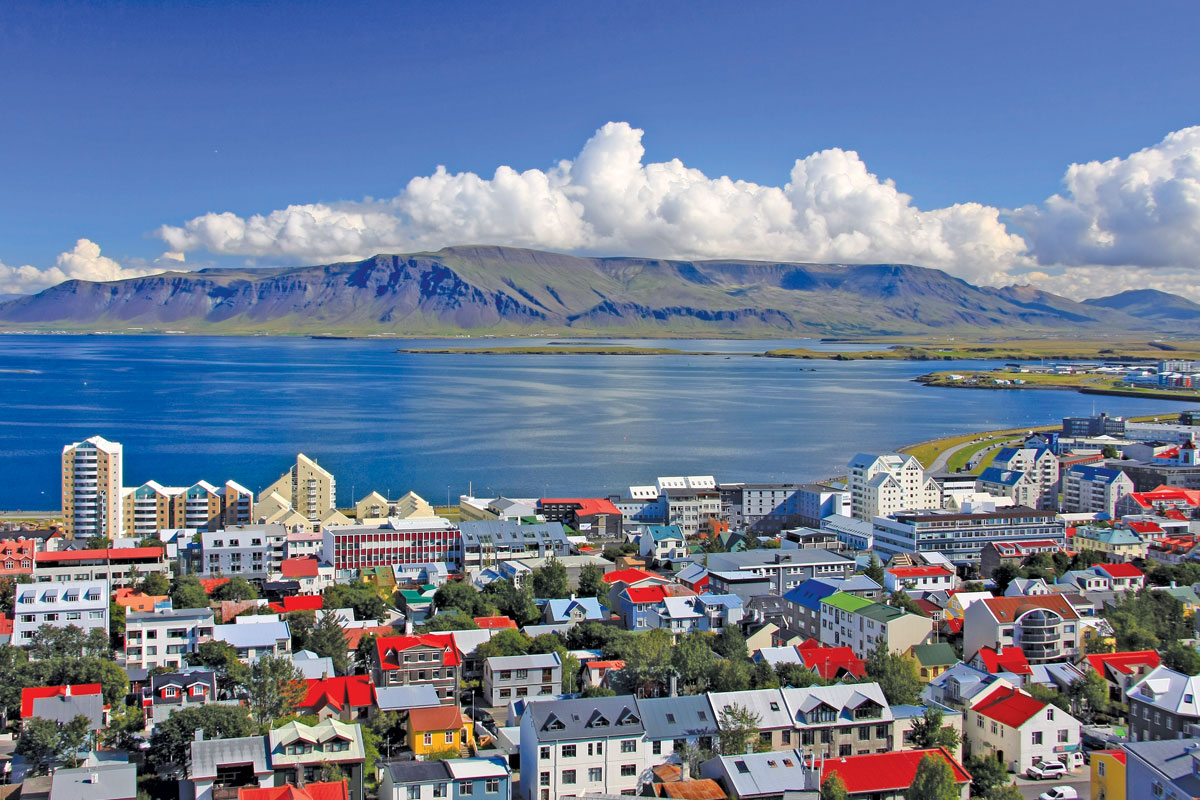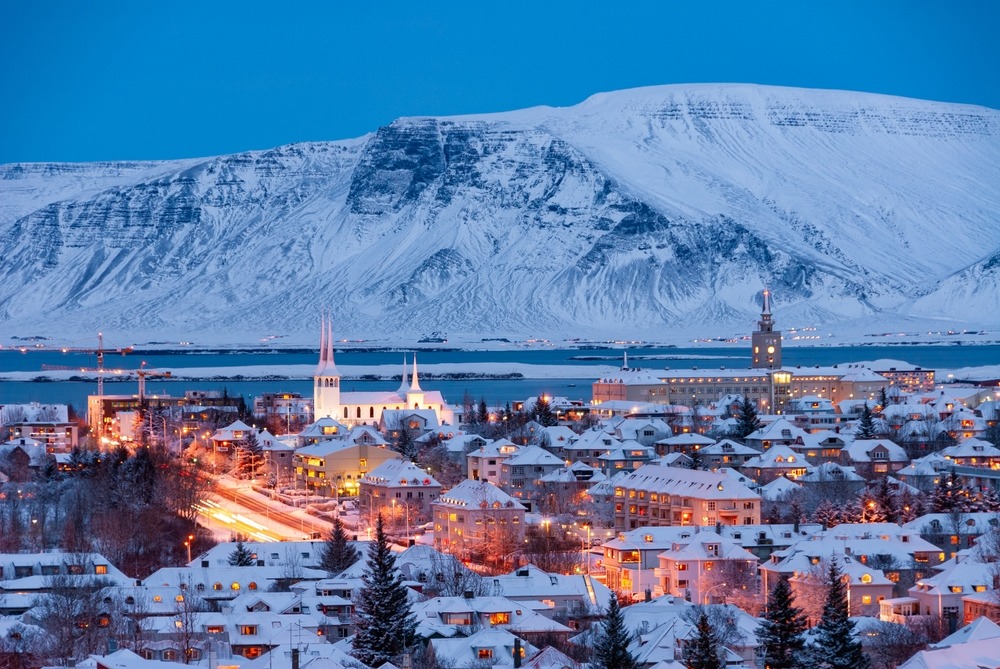Reykjavík, Iceland: A History and Guide to the Top 25 Local Attractions
History of Reykjavík
Reykjavík, the northernmost capital in the world, traces its origins to the year 874 AD when Norseman Ingólfur Arnarson became the first permanent settler in Iceland. According to the Landnámabók (Book of Settlements), he named the area “Reykjavík,” meaning “Smoky Bay,” due to the steam rising from its numerous hot springs. For centuries, Reykjavík, Iceland remained a quiet farming village, its growth constrained by geographic isolation and a harsh climate.
By the 18th century, Denmark, which governed Iceland at the time, established Reykjavík as a trading post to stimulate the local economy. This prompted modest urban development. The late 19th century witnessed the rise of Icelandic nationalism, and Reykjavík became a cultural and political center. In 1904, when Iceland received Home Rule, Reykjavík was chosen as the seat of government, and it officially became the capital when the Republic of Iceland was declared in 1944.
The 20th century brought rapid modernization. Following World War II, Reykjavík expanded dramatically due to urban migration and U.S. military activity during the war, which led to infrastructure development. Since then, the city has evolved into a modern hub of art, education, tourism, and sustainable living—balancing cosmopolitan flair with its deep-rooted Viking heritage.

Top 25 Attractions in Reykjavík
-
Hallgrímskirkja Church
Dominating the skyline, this iconic Lutheran church is one of Reykjavík’s most recognizable landmarks. Inspired by Icelandic basalt lava formations, it features a panoramic observation tower offering sweeping views of the city and surrounding landscapes. -
Harpa Concert Hall and Conference Centre
A masterpiece of contemporary architecture, Harpa dazzles with its geometric glass facade and hosts concerts, opera, and cultural events year-round, serving as Reykjavík’s modern cultural heart. -
The Sun Voyager (Sólfar)
This stainless steel sculpture by Jón Gunnar Árnason resembles a Viking ship and stands as a dreamlike ode to discovery and progress along Reykjavík’s scenic waterfront. -
Perlan Museum and Observation Deck
Built atop hot water tanks, Perlan houses a rotating museum of natural wonders, including an artificial ice cave and a planetarium. The 360° viewing deck provides excellent views of the city and Faxaflói Bay. -
National Museum of Iceland
An essential stop for history buffs, this museum chronicles Icelandic life from the Viking Age to the present through artifacts, photographs, and multimedia exhibits. -
Old Harbour District
This revitalized waterfront is a blend of maritime heritage, cafes, and whale-watching tours. It’s a great spot to enjoy fresh seafood and stroll among boats, shops, and galleries. -
Laugavegur Shopping Street
The city’s main commercial street, Laugavegur, offers a mix of boutique fashion, Icelandic design, cozy cafes, and lively nightlife, making it a must-visit urban artery. -
Reykjavík Art Museum – Hafnarhús
One of three branches of the Reykjavík Art Museum, Hafnarhús focuses on contemporary art and houses works by renowned Icelandic artist Erró. -
Tjörnin Pond
Nicknamed “the pond,” this picturesque body of water in the heart of Reykjavík is popular for feeding ducks, leisurely strolls, and spotting migratory birds. -
Árbær Open Air Museum
Located on the city’s outskirts, this living history museum features relocated and restored buildings that depict rural and urban Icelandic life in past centuries. -
Imagine Peace Tower
Situated on Viðey Island and created by Yoko Ono in memory of John Lennon, this tower of light beams into the sky during winter months, symbolizing peace and hope. -
Saga Museum
This interactive museum uses lifelike silicone figures and detailed sets to bring key moments of Iceland’s early history and sagas to life. -
Kolaportið Flea Market
Open on weekends, Kolaportið is Reykjavík’s indoor market filled with secondhand goods, Icelandic specialties like fermented shark, books, records, and vintage clothing. -
Reykjavík Maritime Museum
Housed in a former fish factory, this museum explores Iceland’s seafaring history and the evolution of the fishing industry that once defined Reykjavík’s economy. -
Viðey Island
A short ferry ride from the city, Viðey offers walking trails, birdwatching, historic ruins, and outdoor art installations in a peaceful natural setting. -
The Settlement Exhibition (Landnámssýningin)
This subterranean museum is built around the preserved ruins of a Viking longhouse dating to 871 AD, providing immersive insights into early Reykjavík. -
Grotta Lighthouse and Nature Reserve
Located on a tidal island at the tip of the Seltjarnarnes Peninsula, this lighthouse and bird reserve offers tranquility, sunsets, and Northern Lights viewing. -
Reykjavík Botanical Gardens
A tranquil oasis showcasing over 5,000 plant species, many native to Iceland, and a lovely spot for a relaxing walk or picnic. -
The Icelandic Phallological Museum
One of the world’s most unique museums, it houses the world’s largest collection of penises from land and sea mammals, offering both science and humor. -
Hljómskálagarður Park
Adjacent to Tjörnin Pond, this family-friendly park features sculptures, playgrounds, and wide green lawns ideal for relaxing on a sunny day. -
Laugardalslaug Thermal Pool
Icelanders love their public pools, and Laugardalslaug is the largest in Reykjavík, with hot tubs, steam rooms, water slides, and a geothermal swimming pool. -
Reykjavík City Hall
Situated beside Tjörnin, this modernist building features a giant topographical map of Iceland and frequently hosts exhibitions and civic events. -
Einar Jónsson Museum
Dedicated to Iceland’s first sculptor, this museum contains dramatic and spiritual works inspired by Norse mythology and Icelandic folklore. -
Whales of Iceland Exhibition
This immersive attraction displays life-sized models of whales and educational exhibits, providing insight into the marine giants that inhabit Icelandic waters. -
The Reykjavík Zoo and Family Park (Fjölskyldugarðurinn)
Ideal for families, this compact zoo showcases domestic animals and native Icelandic wildlife alongside a playground and rides for children.

Reykjavík, Iceland is more than just Iceland’s capital—it is a dynamic blend of old-world sagas and new-age innovation. From Viking ruins and geothermal wonders to vibrant street life and cultural landmarks, Reykjavík’s attractions offer something for every traveler. Whether basking in midnight sun or chasing the aurora borealis, exploring this northern gem is a journey that reveals Iceland’s soul through its capital’s rich tapestry of history and modern charm.

































